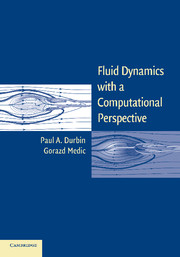5 - High Reynolds Number Flow and Boundary Layers
Published online by Cambridge University Press: 28 January 2010
Summary
Boundary layers are an elemental concept of high Reynolds number flow. They are a framework for discussing viscous fluid dynamics by separating the flow into distinct regions. That is the essential nature of boundary layer theory. The seminal ideas were described by Prandtl in 1904. He recognized that viscous flow along surfaces could be divided into two regions: a vortical layer next to the wall and a potential flow farther from the surface. Modern theories have expanded that to multilayered structure; but the basic notion always is of a thin, vortical layer next to the surface and an inviscid outer flow.
The boundary layer concept brought clarity to the puzzle of the high Reynolds number limit. High Reynolds number can be interpreted as low viscosity. Is inviscid flow the correct limit? Without viscosity, fluid flows freely over a surface, slipping relative to the wall. Hence, the tangential velocity is discontinuous between the stationary wall and the flowing fluid. The shear is infinite. Adding the smallest amount of viscosity would cause an infinite stress. Inviscid flow cannot be the correct high Re limit of viscous flow.
Any amount of viscosity will diffuse the velocity discontinuity: the fluid velocity will be brought smoothly to zero at the stationary wall. Even at the highest Reynolds numbers, viscous stresses cannot be ignored. How, then, is high Reynolds number flow to be constructed?
This puzzle is solved by recognizing that viscous influence is confined to a very thin layer next to the wall. The layer of viscous influence becomes increasingly thin as Re becomes increasingly large.
- Type
- Chapter
- Information
- Fluid Dynamics with a Computational Perspective , pp. 167 - 209Publisher: Cambridge University PressPrint publication year: 2007



